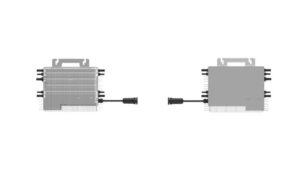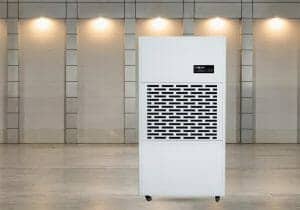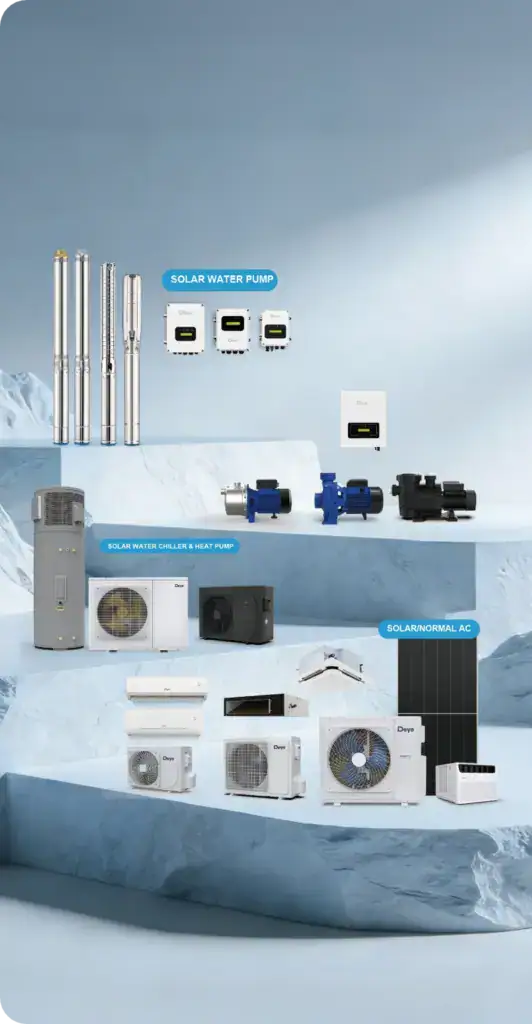A dehumidifier works by removing moisture from the air through evaporation or condensation. The process begins when the unit turns on and blows air into the room. As the air passes over the components’ coils, it picks up moisture and dust particles.
The air then travels out of the unit and back into the room, where the air is cooled down. This process helps in the purification of the air and provides a high indoor air quality.
The humidifier can be compared to an air conditioning unit, but unlike an air conditioner, it does not only cool the space. It decontaminates the air and makes it more breathable.
The device works best in a highly ventilated environment. It is recommended to open the doors and windows when using a dehumidifier to guarantee its maximum functionality.
What temperature should the air that your dehumidifier is producing be?
Your compressor dehumidifier’s exhaust air should be a few degrees warmer than the air inside your room. Your dehumidifier’s model and the temperature of the air in your room will determine the precise air temperature that it produces.
The air leaving your compressor dehumidifier will typically be 3-5°F warmer than the air within your room on average.
Why is hot air coming from my dehumidifier?
Dehumidifiers with compressors blow hot air even when they are working correctly. This is because a small quantity of heat is generated as a byproduct of the dehumidification process by compressor dehumidifiers. Compressor dehumidifiers always expel air that is hotter than the air in your room because of this.
How to Tell if your Dehumidifier has a Compressor
A compressor dehumidifier is most likely what you have if it is portable. The most prevalent kind of dehumidifier in American households is a compressor unit. Compressor dehumidifiers make up about 84.5% of portable dehumidifiers used in American homes.
Generally, a portable dehumidifier will blow warmer air of 3-5 degrees than the room air. Here are a few reasons why your dehumidifier will blow warm air
The evaporator coil of the dehumidifier is filthy
Your dehumidifier may spew hotter air than usual when the evaporator coil becomes unclean. What causes that to occur? It’s crucial first to understand how dehumidifiers take moisture out of the air.
Warm air has a greater capacity to store moisture than cold air. By chilling the air below its dew point, dehumidifiers remove moisture from the air. The dehumidifier essentially cools the air to about 50°F.
Moisture condenses out of the air because cold air can’t hold all the moisture. The moisture drips into a tank used for collection. The air then travels through a hot condenser coil after being cooled and having its moisture removed.
The air reheats up to a little above room temperature as it travels through the condenser coil. The dehumidifier won’t be able to chill the air down as much if the evaporator coil is unclean.
The air then reheats to a considerably higher temperature than normal when it passes through the condenser coil. I will advise cleaning the evaporator coil if your dehumidifier is spewing hot air as a result of a dirty coil.
Your room’s air is too warm
Your dehumidifier will blow out hot air if the temperature in your room is too high. The air that compressor dehumidifiers constantly expel is a little hotter than the air in your room.
Your room will always get a little warm from the dehumidifier. This is a pleasant effect during the chilly winter months.
However, you don’t want to heat the air in your home during the hot summer months. Consider utilizing an air conditioner in the summer if you need to dehumidify your space. Why does a dehumidifier always make your room’s air warmer? The refrigeration cycle is to blame.
The operation of a compressor dehumidifier is identical to that of a portable air conditioner. The key distinction is that a portable air conditioner blows air from your room out of your window to reject heat from its condenser.
By forcing the cool air from the evaporator into the condenser, the dehumidifier rejects heat from its condenser. The result is that a dehumidifier produces air that is somewhat hotter than the air it draws in.
The compressor of the dehumidifier has a problem
The component of the dehumidifier that drives its heat exchange cycle is its compressor. To help heat transfer, the compressor forces the refrigerant through the evaporator and condenser while it operates. Your dehumidifier may spew hot air if the compressor is malfunctioning.
The compressor may have a problem or a refrigerant imbalance, preventing the dehumidifier from operating correctly. Your dehumidifier can start blowing hot air as a result.
What causes a compressor problem? Numerous possibilities exist. A leak in the refrigerant line is among the most frequent ones. Temperatures and pressures at which the dehumidifier operates must be observed if refrigerant seeps out of it.
How can a dehumidifier with a compressor or refrigerant problem be fixed?
Unfortunately, a faulty compressor or leaking refrigerant cannot be fixed quickly. The best course of action is to have an HVAC expert look at it. If your dehumidifier is a tiny model, it might be preferable to get a new one.
A dehumidifier with desiccant blowing hot air
It’s crucial to keep in mind that only dehumidifiers with a compressor emit hot air. Desiccant dehumidifiers don’t produce much heat, so you won’t ever notice it. The internal motors of desiccant dehumidifiers only generate minuscule quantities of heat.
Under no circumstances should a desiccant dehumidifier blow hot air. Your desiccant dehumidifier isn’t working if it’s spewing hot air. Finally, a dehumidifier will also blow hot air and fail to adjust the humidity in your space if it is not installed correctly.
We are wholesale manufacturers of different dehumidifiers suitable for residential and commercial purposes. With a professional team of sales representatives and customer care personnel, we will quickly attend to your orders and ensure prompt delivery. Please, fill out the contact form to get in touch with us.










